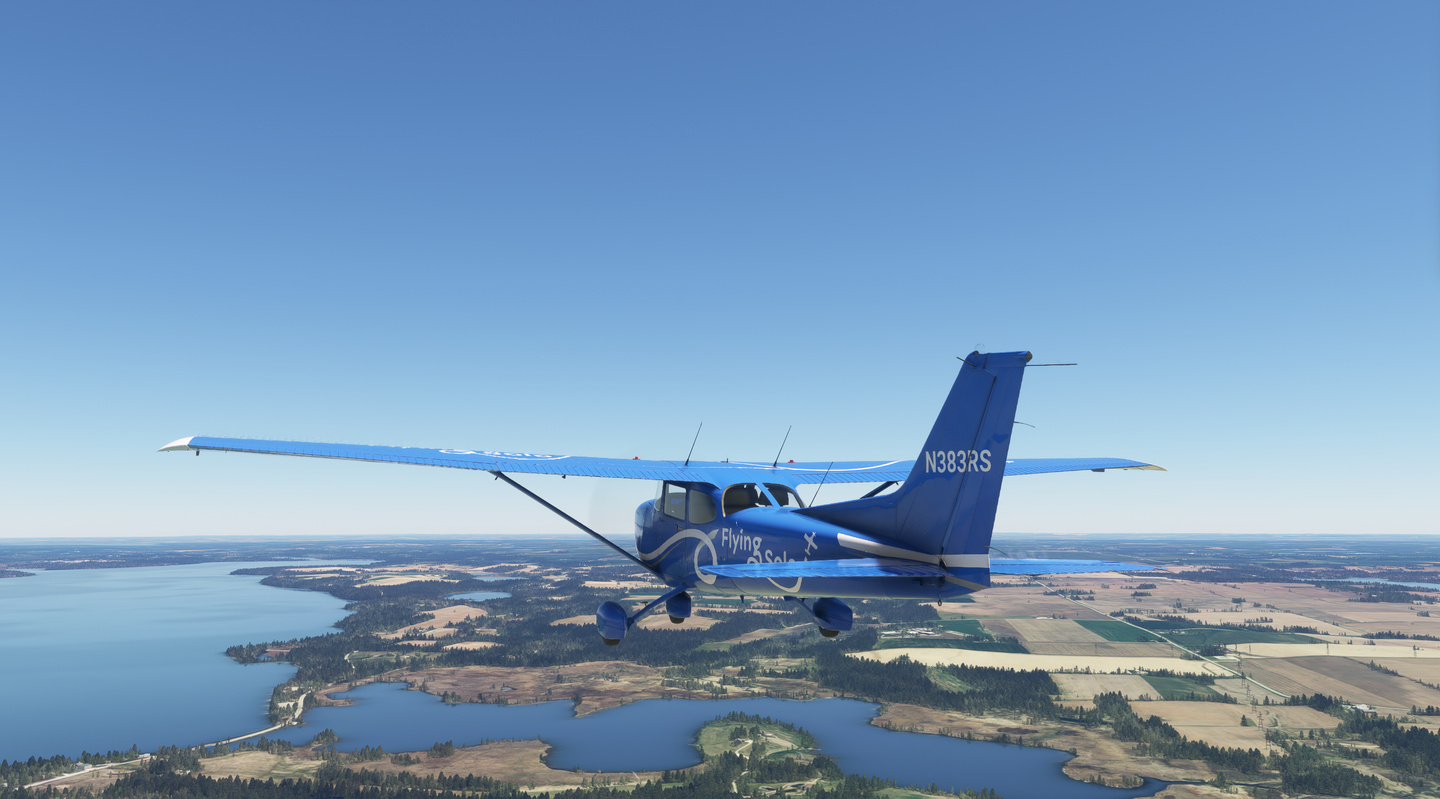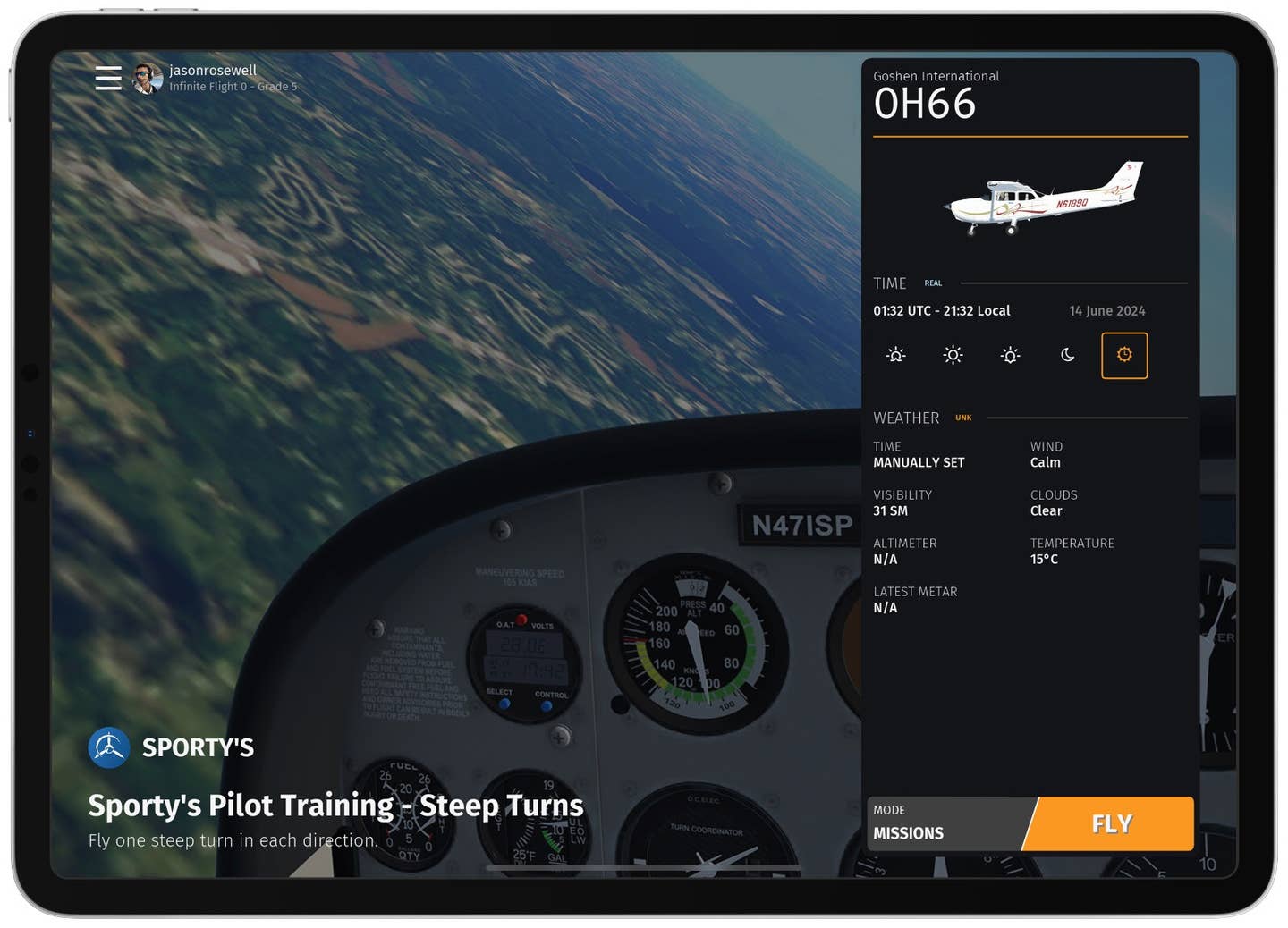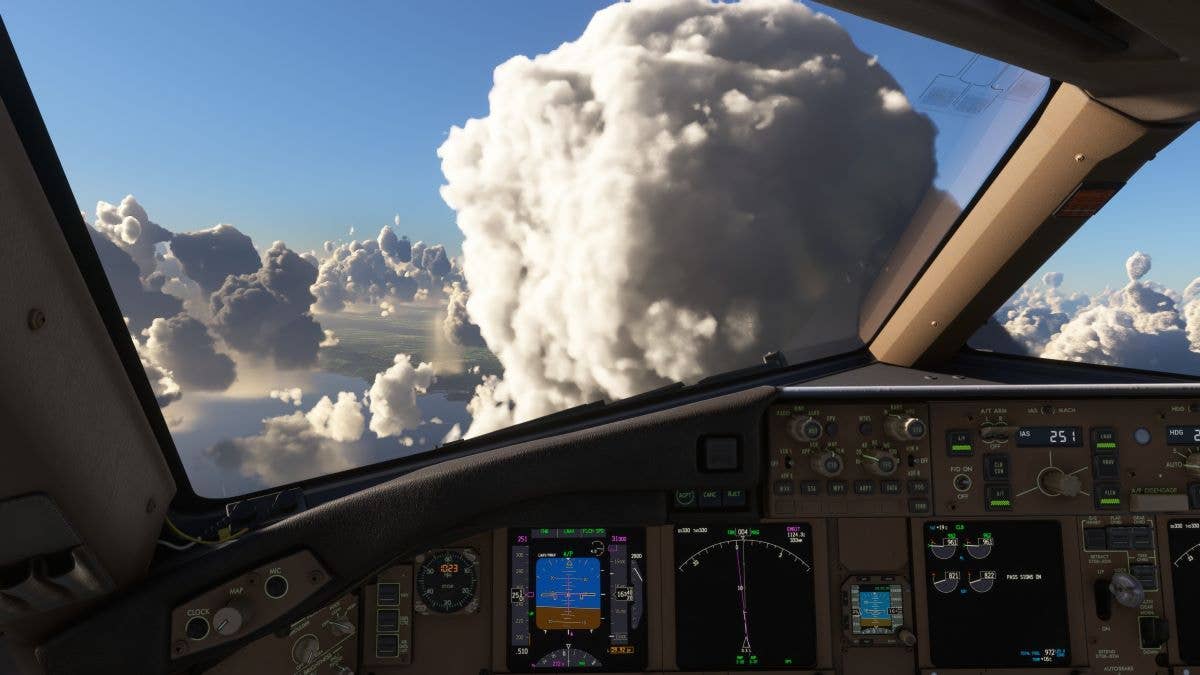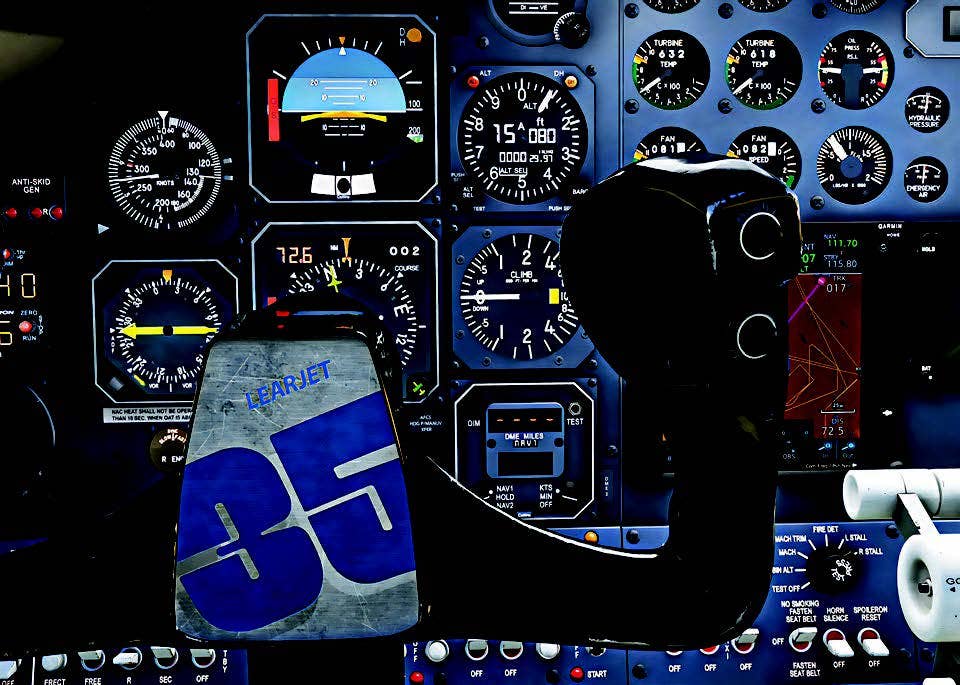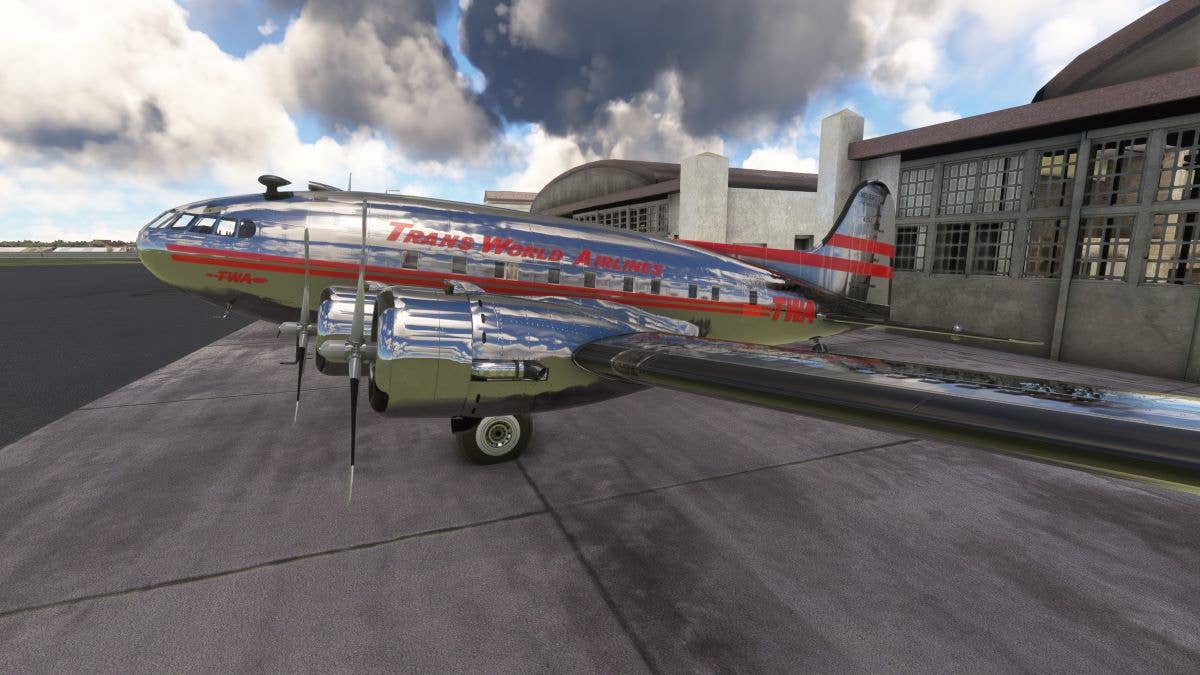The Story of the Schneider Trophy and the Supermarine S.5
The aircraft and the race played a significant role in the development of the iconic Spitfire fighter.
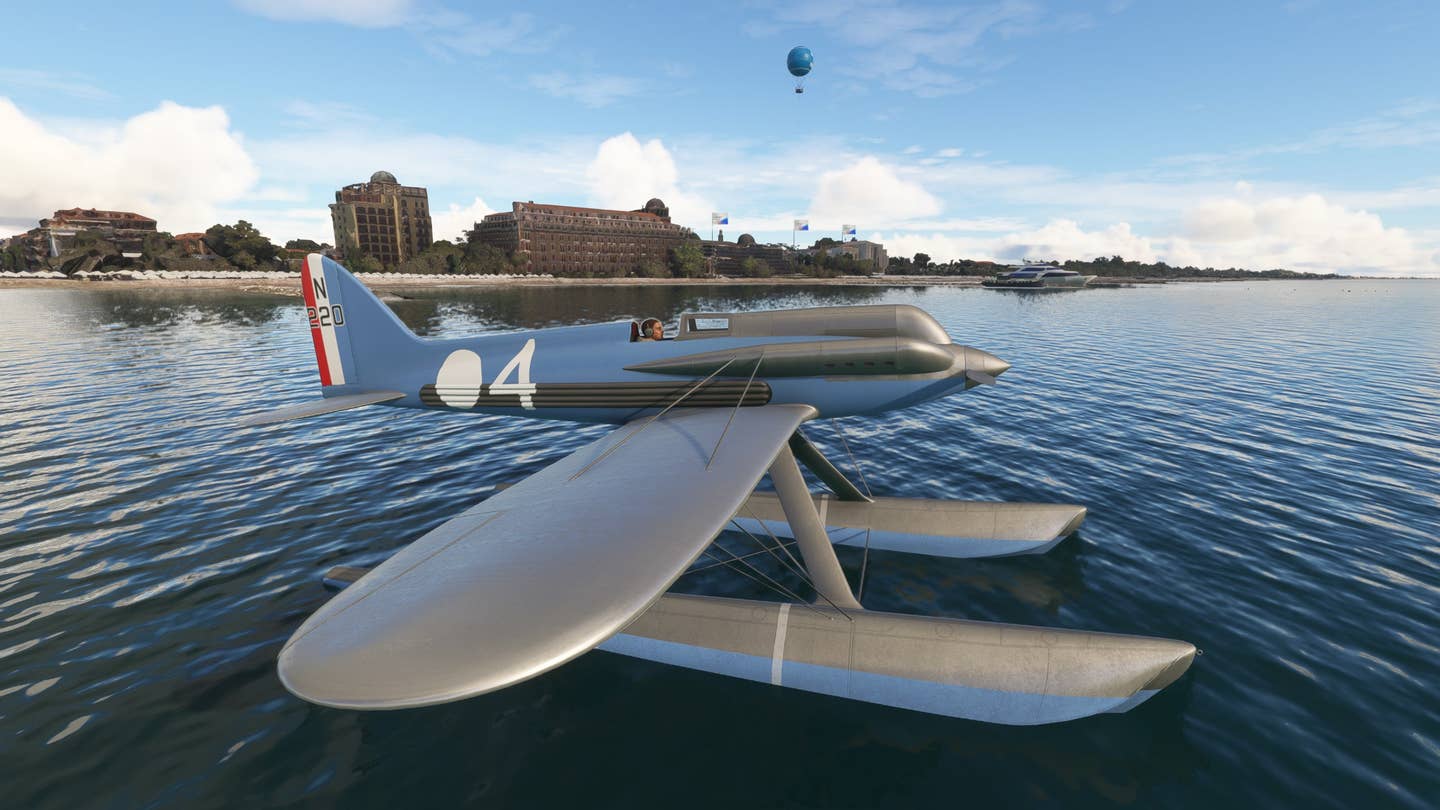
The Supermarine S.5 competed in the fiercely contended Schneider Trophy.[Courtesy: Patrick Chovanec]
Today in Microsoft Flight Simulator 2020, I’ll be flying the Supermarine S.5, the British racing airplane from the 1920s that pointed the way to one of the most iconic airplanes of World War II—the Spitfire.
This is also the story of the Schneider Trophy, one of the most prestigious prizes in early aviation that sparked fierce international competition to develop the fastest airplanes in the world. The trophy was the brainchild of Jacques Schneider, a French hydroplane boat racer and balloon pilot who was sidelined by a crash injury. Originally an annual contest, starting in 1912, it promised 1,000 British pounds (more than $100,000 today) to the seaplane that could complete a 280-kilometer (107-mile) course in the fastest time. Interrupted by World War I, the contest resumed in 1919 with a new provision: Any country that won three times in a row would keep the trophy permanently. The prize quickly became the focus of intense international rivalry.
Until 1922, the contest was dominated by flying boats—with their fuselages serving as the floating hull—and by the hard-charging Italians—led by the companies Savoia and Macchi, which came close to walking away with three wins and the trophy, scoring average speeds just over 100 mph. But starting in 1923, the Americans introduced floatplanes (streamlined biplanes on pontoons) and took speeds to an entirely new level. Jimmy Doolittle—the famous racer who later led the first World War II bombing raid on Tokyo—won the 1925 race at 232.57 mph, putting the U.S. one step from final victory.
The sole British victory had come in 1922 in a flying boat built by Supermarine Aviation Ltd. Founded in 1913, the Southampton, England-based company had a disappointing record designing aircraft during WWI but since then had enjoyed some limited success ferrying passengers across the English Channel. The company’s chief designer was a young man still in his 20s named Reginald Joseph “R.J.” Mitchell. Desperate not to be shut out by the Italians and Americans, the British Air Ministry backed Mitchell’s efforts to experiment with some radical new designs.
The Supermarine S.4 (the “S” being for Schneider) was a streamlined floatplane, like the American entries, but a monoplane instead of a biplane, constructed mostly of wood and powered by a 680 hp Napier Lion engine. In 1925 it set a world speed record of 226.752 mph, but it proved highly unstable and crashed during trials for the Schneider Trophy race that year. Two years later, Supermarine and Mitchell were back with a revised design: the Supermarine S.5. Three were built and entered in the Schneider competition, numbered 219, 220, and 221. I’ll be flying No. 220 today.
I’ll talk about some of the differences between the S.4 and S.5, but first let’s set the scene. The Schneider Trophy race was hosted by whichever country won the last time. The Italians were victorious in 1926, so the 1927 race was held in Venice. This time, not only was the British government providing financial support, it also sponsored a team of Royal Air Force (RAF) pilots to fly the airplanes.
One of the more curious conditions of the Schneider contest was that the aircraft first had to prove they were seaworthy by floating for six hours at anchor and traveling 550 yards over water. I found taxiing, takeoff, and landing quite bouncy. With its powerful engine and high center of gravity, the S.5 had a tendency to porpoise up and down over the smallest waves.
For all the entries, just keeping the fragile airframes together and the high-powered engines functioning was half the battle. Often, the finicky aircraft broke down or crashed (like the S.4 did in 1925) before they could even begin the race.
The crowds still came. It’s been barely a few months since American Charles Lindbergh crossed the Atlantic, creating a wave of popular enthusiasm for aviation. More than 250,000 spectators have gathered to see the 1927 Schneider race. The course itself is located outside the lagoon, along the Lido. The airplanes must fly seven 47-kilometer laps around the course for a total distance of 320 kilometers (just over 204 miles).
And here we go at full speed across the starting line across from the Hotel Excelsior.
We fly south along the shoreline of the Lido, past the lighthouse at Alberoni, and toward Chioggia.
A steep 180-degree turn at Chioggia, a miniature Venice that built its medieval wealth on its adjoining salt pans…
…then north on the seaward straightaway.
Another hard left turn around the San Nicolo lighthouse…
…then back across the starting line to begin the next lap.
Unlike the S.4, the S.5’s wings are strongly braced by wires. These may add unwanted drag, but they keep the airplane from breaking up under the stress of those high-speed turns.
The S.5 I’m flying, No. 220, is powered by an improved 900 hp Napier Lion piston engine, delivering 220 horsepower more than its predecessor. It has 12 cylinders, arranged in three lines of four cylinders each in the shape of a W, creating the three distinct humps along the nose. The propeller has a fixed pitch.
Fuel was carried inside the two floats, while the oil tank was located inside the tail. The engine was cooled by water, which circulated its heat to copper plates on the wings that served as radiators. Corrugated metal plates along the fuselage served as radiators for the engine oil.
The cockpit is mainly designed to monitor if the engine is overheating—and little else. The goal is to keep rpm close to 3,300, radiator temperature below 95 degrees, and oil temperature below 140 degrees. I’ve found that while the engine may not be air cooled, the flow of air over the radiator surfaces matters a lot. So maintaining a relatively high speed at an efficient engine setting actually helps keep things cool. There’s an airspeed indicator, but it tops out at 400 kilometers per hour, well below our racing speed. There’s no altimeter, and only a rudimentary inclinometer (bubble level) to indicate bank. It’s also nearly impossible to see straight ahead over the engine cowling.
In the cockpit to my right, I have a paper punch card. Every time I pass the finish line, I poke a new hole in it to keep track of how many laps I’ve completed.
Another little twist in the rules: Twice during the race, the aircraft had to “come in contact” with the water—typically a kind of bounce without slowing, which could be very tricky at high speed.
It so happens that every single airplane except two—both Supermarine S.5s—failed to finish the race in 1927 for one reason or another. Our No. 220, flown by Flight Lieutenant Sidney Webster, finished first with an average speed of 281.66 mph.
The British had won the trophy, but they would have to repeat their performance two more times to keep it for good. To allow more time for aircraft development, participants agreed to hold future competitions every two years, with the next race coming in 1929.
The contest would take place in Supermarine’s home waters off Southampton. The company entered one S.5 and two S.6s. The latter, which had roughly the same design, were now all-metal planes with a new engine with more than twice the horsepower—the 1,900 hp Rolls-Royce R. To keep this monster engine cool, the S.6 needed surface radiators built into its pontoons as well as wings. Not only did one of the S.6s win the 1929 trophy with an average speed of 328.64 mph, but just before the race it set a new world speed record of 357.7 mph.
The British were now one win away from keeping the trophy for good. But with the onset of the Great Depression, the Labour Party-led British government pulled its funding and forbade RAF pilots to fly in the next race in 1931. The decision was wildly unpopular and led to public outcry. Into the fray stepped Lady Lucy Houston, a former suffragette and the second-richest woman in England. Fiercely critical of the Labour Party, she personally pledged to donate whatever funding was needed for Britain to compete in the race.
Backed by 100,000 pounds from Houston (and renewed participation by an embarrassed British government), Supermarine entered six aircraft in the race—two S.5s (including No. 220, which won at Venice), two S.6s, and two brand-new S.6Bs. The S.6B had redesigned floats, but most importantly, an improved Rolls-Royce R engine that delivered an astounding 2,350 horsepower. As it turned out, no other countries entered the competition that year. The S.6B raced alone, achieving an average speed of 340.08 mph. The next day, the S.6B set a new world speed record of 407.5 mph.
There would be no more Schneider Trophy races. With three straight, the trophy was Britain’s to keep, and it remains on display at the Science Museum in London, though few visitors may appreciate what it means. Besides a boost to national pride, the Schneider races propelled aviation forward by leaps and bounds. Today, it might be surprising to realize that the world speed record was consistently set by seaplanes from 1927 to 1935, when the Hughes H-1 Racer finally surpassed them.
The Supermarine S-planes provided Mitchell experience and confidence with incorporating all-metal construction, streamlined monoplane design, innovative wing shapes, and high-performance, liquid-cooled engines. And the S.6s introduced him to working with Rolls-Royce, which built on the lessons learned from its “R” engine to develop a new mass-production engine, starting at 1,000 horsepower, called the Merlin. In the early 1930s, Mitchell would marry these proven high-speed design ideas to the Merlin engine to create the Supermarine Spitfire, the legendary aircraft credited with winning the Battle of Britain during WWII. As for Lady Houston, who supported Supermarine’s entry in the final race, she was later lauded as the “Mother of the Spitfire” for keeping Mitchell’s development efforts alive.
In 1942, the British produced a wartime movie called The First of the Few. It tells the story of Mitchell’s development of the Spitfire, including the key role of the Schneider Trophy races. But the raceplanes themselves were mostly abandoned and ultimately scrapped. Only the Supermarine S.6B that won the 1931 race still survives—now on display at the Solent Sky Museum in Southampton.
In 1975, Ray Hilborne built a replica of the Supermarine S.5, which was damaged a few years later. Bob Hosie rebuilt it to fly again, inspiring a folk song by Archie Fisher. Sadly, Hosie was killed in 1987 when it crashed. Today his son William Hosie is part of a project to build a new replica of the Supermarine S.5, with hopes to have it flying by 2027. You can learn more about it here.
Meanwhile, the Schneider Trophy race was revived in 1981. Instead of seaplanes, it features small general aviation airplanes as part of the annual British Air Racing Championship.
I hope you enjoyed the story of the Supermarine S.5 and its amazing legacy. If you’d like to see a version of this article with more historical photos and screenshots, you can check out my original post here.
This story was told utilizing the freeware Supermarine S.5 add-on to Microsoft Flight Simulator 2020 created by sail1800 and downloaded from flightsim.to.

Subscribe to Our Newsletter
Get the latest FLYING stories delivered directly to your inbox


